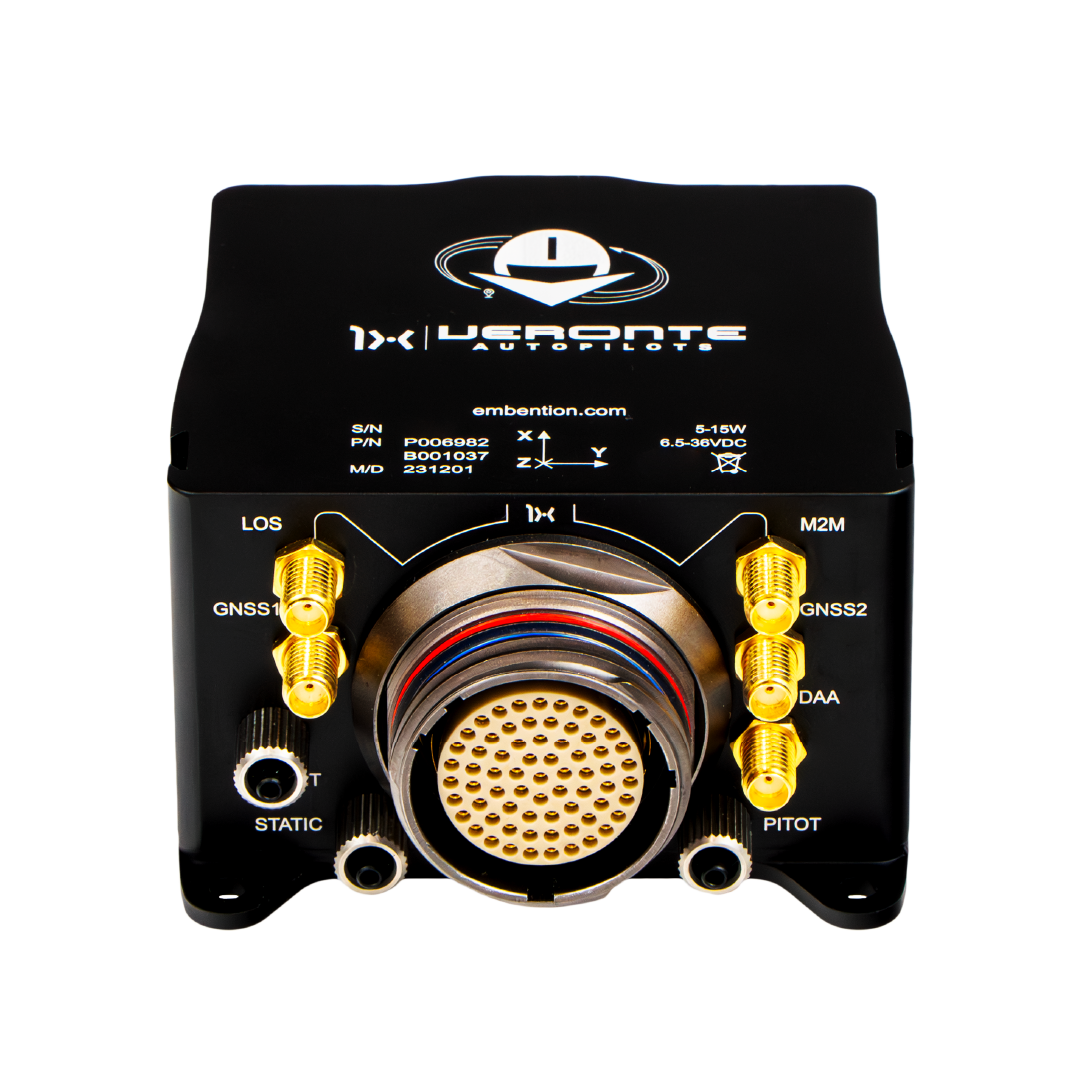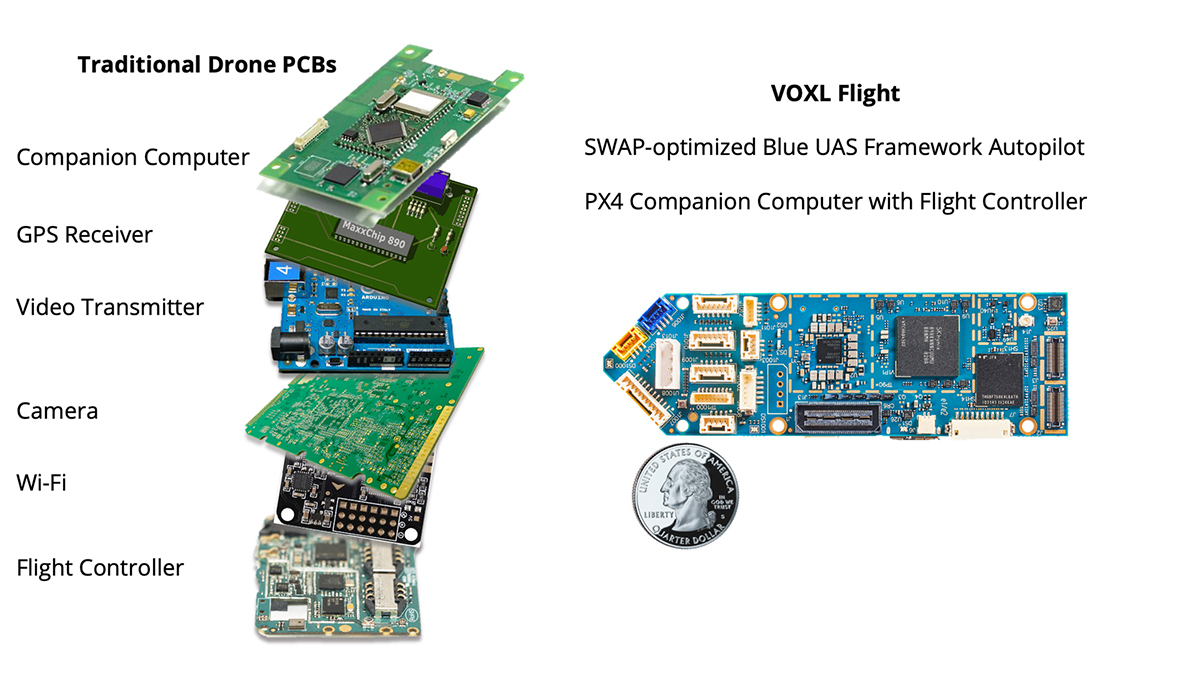Enhance Drone Performance with SparkNavi Drone Flight Controller and GNSS/INS Made in Taiwan
Enhance Drone Performance with SparkNavi Drone Flight Controller and GNSS/INS Made in Taiwan
Blog Article
Discovering the Function of Drone Flight Controllers in Enhancing Flight Security and Navigation Efficiency
The development of drone innovation has actually considerably raised the value of flight controllers, which work as the mind of these aerial vehicles. By integrating real-time information from an array of sensing units, flight controllers improve flight security and navigation performance, making sure that drones can operate efficiently even in intricate atmospheres. This discussion will certainly discover the key elements that contribute to these renovations, in addition to the implications for the future of autonomous trip. What innovations lie ahead that could additionally change the capacities of drone flight controllers?

Comprehending Flight Controllers
Flight controllers are indispensable parts in the functioning of drones, working as the minds that manage and stabilize trip procedures. These innovative tools procedure information from different sensing units, including accelerometers, gyroscopes, and GPS, to ensure that the drone keeps its designated trip path. The trip controller interprets this information and executes commands based on pre-defined algorithms, enabling the drone to react to ecological modifications, such as wind or barriers.
The key feature of a trip controller is to keep security throughout trip. It achieves this by making real-time changes to the drone's electric motors and control surface areas, making sure balance and control. In addition, contemporary flight controllers incorporate advanced attributes such as waypoint navigating, enabling for automated flight paths and boosted functional performance.
Recognizing the design of trip controllers is vital for both enthusiasts and specialists. As innovation advancements, trip controllers have actually become more small and qualified, incorporating fabricated intelligence to adapt and improve decision-making processes to intricate trip circumstances.
Secret Components of Trip Security
Attaining optimal trip stability in drones depends on several essential elements that function in performance to ensure smooth and regulated operations. Central to this stability is the trip controller itself, which processes data from numerous sensing units to maintain the preferred trip attitude. This consists of accelerometers and gyroscopes that measure movement and orientation, allowing for real-time modifications to the drone's position.
Another crucial component is the digital rate controllers (ESCs), which control the power provided to the motors. By carefully tuning electric motor rates in response to trip controller commands, ESCs assist maintain equilibrium and counteract disturbances triggered by wind or sudden activities.
Furthermore, the layout of the drone's framework plays a critical function in trip security. A well-structured structure minimizes vibrations and boosts the total aerodynamic profile, adding to smoother trip features. Finally, the assimilation of innovative formulas within the trip controller aids in anticipating changes, making certain a responsive and adaptable flight experience.
Together, these parts create a cohesive system that improves a drone's security, enabling for specific handling and improved performance in various flight conditions.
Navigating Performance Methods
Efficiency in navigating is necessary for optimizing drone procedures, specifically in intricate settings. Effective navigation methods improve the capacity of drones to traverse tough terrains and avoid challenges, thereby improving operational efficiency and safety.
One noticeable strategy is the application of advanced general practitioners and inertial measurement systems (IMUs) that supply accurate area monitoring and positioning data. These modern technologies permit drones to determine optimum trip courses in real-time, thinking about numerous elements such as visit this website wind problems and prospective obstacles.
Another strategy entails the usage of formulas for path planning and optimization. Algorithms such as A * and Dijkstra's formula can be deployed to figure out one of the most effective course while lessening energy usage and flight time. Incorporating maker understanding models can enable drones to adaptively discover from their settings, improving navigating abilities through experience.

Influence On Autonomous Drones
The assimilation of sophisticated navigating strategies has profoundly changed the abilities of autonomous drones, enabling them to operate with better autonomy and accuracy. SparkNavi drone flight controller and GNSS/INS made in taiwan. These improvements are mostly credited to advanced flight controllers that make use of real-time data processing and sensor blend, enabling drones to navigate complicated atmospheres seamlessly
The effect on self-governing drones prolongs beyond mere navigating; it includes enhanced barrier evasion, improved security during vibrant problems, and raised goal reliability. By leveraging algorithms that incorporate equipment discovering and expert system, drones can adapt to changing situations, making educated decisions that optimize their flight paths while decreasing risks.
Moreover, the implementation of durable flight controllers has facilitated the implementation of complex tasks, such as aerial inspections, shipment solutions, and farming surveillance, with very little human intervention. This ability not just streamlines operations however additionally lowers human mistake, thereby improving overall safety.
Because of this, the functional range of autonomous drones has expanded dramatically, making them essential tools in various markets. Their capacity to carry out efficiently in diverse situations highlights the crucial role that progressed flight controllers play fit the future of unmanned aerial systems.
Future Patterns in Trip Control
Regularly, innovations in trip control technology are poised to redefine the landscape of drone operations in the coming years. Emerging fads suggest a substantial change towards enhanced artificial knowledge (AI) assimilation, making it possible for flight controllers to refine real-time information extra efficiently. This evolution will facilitate enhanced decision-making capacities, allowing drones to adapt to vibrant environmental problems autonomously.
Additionally, the application of artificial intelligence formulas is expected to boost anticipating maintenance, consequently reducing downtime and prolonging the lifecycle of drone elements. This positive technique to maintenance will certainly be important as drone applications broaden throughout numerous markets, from agriculture to logistics.

.png)
Last but not least, advancements in protected communication protocols will certainly attend to safety and governing concerns, making certain that drones can run flawlessly in congested airspaces (SparkNavi drone flight controller and GNSS/INS made in taiwan). Collectively, these trends aim towards a future where trip control systems are not just Read More Here smarter and a lot more also capable but efficient of running securely in an increasingly integrated airspace
Verdict
To conclude, drone flight controllers are indispensable to boosting trip stability and navigating effectiveness through the innovative handling of sensor data. By preserving optimal flight perspectives and employing advanced formulas for path optimization and obstacle avoidance, these controllers dramatically add to the autonomy and functional security of drones. As modern technology continues to advance, even more improvements in trip control systems are prepared for, promising improved performance and increased abilities in the world of unmanned aerial automobiles.
By integrating real-time data from a selection of sensors, flight controllers enhance flight stability and navigating effectiveness, making certain that drones can run efficiently also in complex settings.Trip controllers are essential elements in the performance of drones, offering as the minds that manage and stabilize flight procedures. In addition, modern-day trip controllers include innovative functions such as waypoint navigation, enabling for automated flight paths and boosted operational efficiency.
Central to this stability is the flight controller itself, which processes information from different sensing units to maintain the Source wanted trip mindset.In conclusion, drone flight controllers are integral to improving trip stability and navigation effectiveness through the innovative processing of sensor data.
Report this page